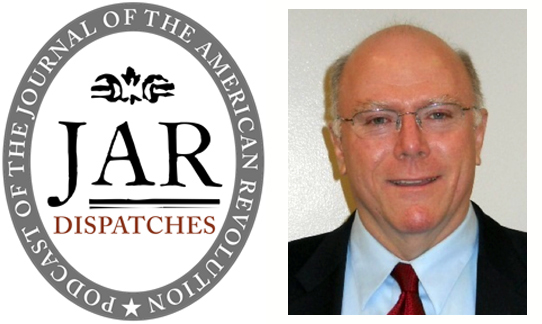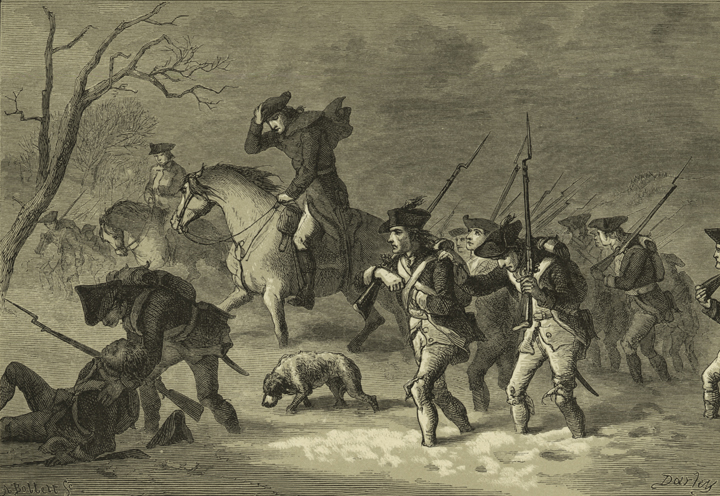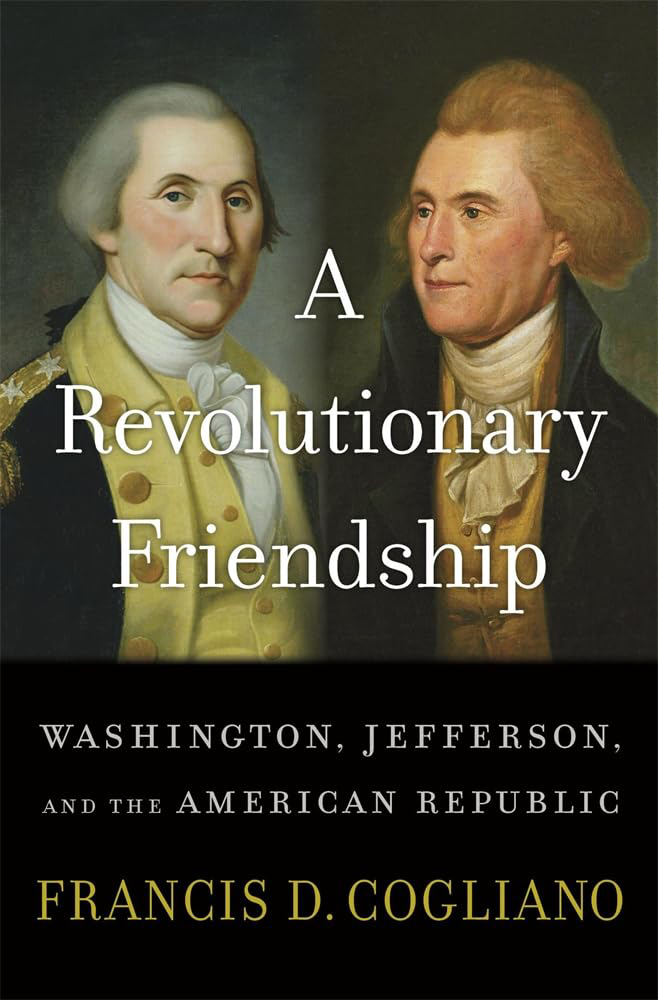Just as Nathan Hale is the best known spy of the American Revolution, so James Lafayette is the best known African-American spy of the conflict. However, the “facts” so often repeated in histories of the era regarding both these individuals are heavily based on folklore and oral stories passed along with little or no documented evidence. Perhaps this should not be considered unusual. Spying is supposed to be secret and George Washington was both skilled and well-practiced in protecting the “sources and methods” of his intelligence operations. He made every effort to pass along this discipline to his officers, with varying degrees of success.
In both James Lafayette’s and Nathan Hale’s cases it was not until several decades after the Revolution that their folk legends expanded into popular culture. In the first half of the nineteenth century a surge in patriotism and interest in the Revolutionary War resulted in the publication of many remembrances of the period by aging veterans or relatives passing along stories told by veterans.
The visit to the United States by the Marquis de Lafayette from July 1824 to September 1825, and his meeting with James Lafayette, helped focus popular interest in his service. In 1824, popular portrait painter John B. Martin painted James Lafayette; a few years later, in 1828, James E. Heath published his adventure novel “Edge Hill,” which featured a Revolutionary spy named James, whose dangerous activities were assumed to be those of James Lafayette.
The spy that many historians call James Armistead referred to himself only as James or James Lafayette; the addition of Armistead to his name was another folklore addition reflecting his ownership, as a slave, by the Armistead family. In my book on American intelligence activities during the Revolutionary Era, I spend a few hundred words describing his spying activities.[1] Most of these details came from an undated United States Government publication, “A Counterintelligence Reader: American Revolution to World War II, Vol. I.”[2] At the time I took notes from this publication, now over fifteen years ago, I spoke with officials from the office which produced it. I felt comfortable that the information was factual. Recent attempts to confirm the factual basis for most of these activities attributed to James Lafayette now cause me to re-evaluate the primary source documentation and separate the certain facts from the speculation, elaboration and folklore.
James Armistead – His Folklore Legend
The widely-accepted narrative of James Lafayette generally goes like this:
James was a slave owned by William Armistead of New Kent Country, Virginia. He was educated by his master and knew how to both read and write (there were no laws prohibiting education of slaves in the Virginia colony at that time). With his master’s permission, he joined the Continental Army in 1781. General Lafayette, who commanded Continental Army forces in the Virginia tidewater area at the time, selected him to serve as a spy. Lafayette was aware that the British knew James from his travel about the area for his master and therefore his comings and goings would seem normal and usual. Claiming to have run away from his master, James became a servant in British Gen. Charles Cornwallis’s headquarters, where he was able to overhear British plans and intentions, and even read documents from headquarters desks. He passed this information, and information from other sources behind British lines, back to Lafayette. He was also involved in a well thought-out deception operation by Lafayette to cause the British to believe the Continental forces were larger than they actually were.
Cornwallis, believing that since James knew the area so well and could, as a slave, move about without attracting much attention, recruited him to spy on American activities. James used this status as a reason to move between the two armies so he could report to Lafayette. After the surrender at Yorktown, Cornwallis saw James at Lafayette’s Headquarters and realized he had been fooled.
After the war James petitioned for his freedom and used a note by Lafayette to support his claim of assisting the American cause. He subsequently was granted his freedom and later obtained a pension for his services to the Continental Army.
These are the basic claims of James’s intelligence activities. Many writers have added additional details and descriptions of how these activities were carried out. Some parts of the story – that he was a slave for the Armistead family, that he joined the Continental Army, that he was a spy, and that Lafayette recommended him after the war – are easily proven. Other parts of the tale – that he was a servant to Cornwallis, that there was a deception scheme devised by Lafayette that James helped to effect, that Cornwallis saw him after the surrender – are not supported by any surviving evidence. Let’s look at the actual information that we have about James the spy.
James Lafayette – Documentary Evidence
There are three documents which support the fact that James undertook intelligence missions for General Lafayette at significant personal risk. The first is his petition to the Virginia General Assembly of November 30, 1786 requesting freedom – his Manumission Petition.[3]
In this petition, James stated the following regarding his spying activities:
That during the time of his serving the Marquiss, he often at the peril of his life found means to frequent the British Camp, by which means he kept open a channel of the most useful communications to the army of the state: That at different times your petitioner conveyed inclosures, from the Marquiss into the enemies lines, of the most secret & important kind; the possession of which if discovered on him would have most certainly endangered the life of your petitioner:
James’ petition was supported by a Testimonial from Lafayette, dated November 21, 1784:
This is to certify that the bearer by the name of James has done essential services to me while I had the honor to command in this state. His intelligences from the enemy’s camp were industrially collected and faithfully delivered. He perfectly acquitted himself with some important commissions I gave him and appears to me entitled to every reward his situation can admit of. [4]
The third document is James’s pension request to the Virginia legislature, dated December 28, 1818.[5] Regarding his services to Lafayette, he stated:
Hazardous indeed were the offices which your petitioner was appointed to perform. Having many times at the peril of his own life entered the British Camp, and conveyed to his General, Such information as was deemed highly beneficial to the American cause.
There is no question, then, that James worked as a spy. There are also two letters from Lafayette to Washington which report information provided an informant inside British lines. The first is dated July 31, 1781 and stated:
A correspondent of mine, servant to Lord Cornwallis, writes on the 26th of July, at Portsmouth, and says his master, Tarleton and Simcoe, are still in town, but expect to move. The greatest part of the army is embarked. My lord’s baggage is yet in town. His lordship is so shy of his papers that my honest friend says he cannot get at them.[6]
Notice that James’s own petitions, and the 1784 endorsement by Lafayette, make no mention of James being a servant to Lord Cornwallis, so we cannot assume that Lafayette’s “correspondent” in this case was James. The other letter from Lafayette to Washington is better known. Dated August 25, 1781, it contains extensive information on the British forces. Lafayette cite the same informant as in the previous letter, but also mentions another individual and that he also received intelligence from deserters. Below is the intelligence portion of the letter:
I have got some intelligence by the way of this servant I have once mentioned – a very sensible fellow was with him and from him as well as deserters I hear that they begin fortifying at York. They are now working by a windmill at which place I understand they will make a fort and a battery for the defense of the river. I have no doubt but that some thing will be done on the land side. The works at Gloster are finished. They consist of some (trifling) redoubts across Gloster Neck and a battery of 18 pieces beating the river.
The enemy have 60 sails of vessels into the York River – the largest a 50 guns ship two 36 frigats – about seven other armed vessels. The remainder are transports some of them still loaded and a part of them very small vessels. It appears they have in that number merchant men some of whom Dutch prizes. The Men of War are very thinly manned. On board the other vessels there are almost no sailors.
The British Army had been sickly at Portsmouth. The air of York begins to refit them. The whole cavalry have crossed on the Gloster side yesterday evening a movement which I gave repeated accounts to the militia there. … The works at Portsmouth are leveling. …
The numbers of the British army fit for duty I at least would estimate at 4500 rank and file. Their sailors I cannot judge but by intelligence of the number of vessels. There is an amazing quantity of Negroes but (except at working) they may become an uncomberance. [7]
Clearly these two letters refer to the same man, a servant to Cornwallis. Was it James, the man later endorsed by Lafayette? Or was James the “very sensible fellow” who “was with him”? We don’t actually know if James was either of these people.
Conclusions
I have reviewed the above documents from the perspective of a counterintelligence analysis of access and reporting, exactly as would be done with similar information on any suspected spy. From my professional background I have some experience in this area.
As to access, it is clear that James was involved in collecting intelligence inside British lines, and held some position which gave him a somewhat broad access to British activities, perhaps even to papers in Cornwallis’s headquarters. He may well have been a servant of some kind to Cornwallis or at his headquarters, or perhaps Lafayette used that designation to disguise his actual position and duties. There is also the hint of James functioning as a double agent in his Manumission Petition wherein he notes that he “… conveyed inclosures, from the Marquiss into the enemies lines, of the most secret and important kind …”
It is also clear that he provided useful and important intelligence on British activities to Lafayette, at great personal risk to himself. Lafayette’s testimonial stated that James’s activities were “essential” and “important.”
There is, however, little detail of how he carried out his activities and the tradecraft he used in obtaining his information and then reporting it back to Lafayette. Understandably, James’s actions represented a patriotic story worth telling. Thus, the folklore stories may or may not contain actual facts or details orally passed along through the years.
Of all his folklore adventures, to an intelligence officer the story of his involvement in Lafayette’s deception operation to convince the British that more American forces were present than was the case seems quite believable.[8] Why? Because of the details in the story which would seem to indicate that it contained the elements of tradecraft required for a successful deception operation. Most people would not be aware of the requirement for such details in such an operation.
Bottom Line: James Lafayette was a brave American spy, who put himself in danger for the American cause. Unlike Nathan Hale, whose mission was unsuccessful, his intelligence activities produced important information which assisted Lafayette in keeping British forces in the tidewater until the American-French Army could force their surrender. How he did this is not documented. Indeed, the operational security that protected details of his operations also insured his personal safety.
Good spies seldom leave a detailed record of successes – while poor spies often leave such a record of their failure.
[1] Kenneth A. Daigler, Spies, Patriots, and traitors: American Intelligence in the Revolutionary War (Washington, DC: Georgetown University Press, 2014), 226-227.
[2] Frank J .Rafalko, ed, A Counterintelligence Reader: American Revolution to World War II, vol. I (Washington, DC: National Counterintelligence Executive, n.d.).
[3] Legislative Petition for James, Slave Belonging to William Armistead, November 30, 1786, Box 179, Folder 10, Library of Virginia, Richmond Virginia.
[4] www.mountvernon.org/…/spying-and-espionage/…spies…/lafayette-testimonial-to-james-armistead-lafayette/, accessed May 23, 2017.
[5] Digital Library of Virginia, Kent County Legislative Papers, at http://revwarapps.org/VAS807. Pdf. Accessed May 19, 2017.
[6] Lafayette, Memoirs Correspondence and Manuscripts of General Lafayette (New York: 1837), ebook at https:// www.gutenberg.org/files/8376/8376-h/8376-h.htm. Accessed 22 May 2017.
[7] http://founders.archives.gov/documents/Washington/99-01-02-06792, accessed May 19, 2017.
[8] Daigler, Spies, Patriots, and traitors, 227.













5 Comments
Ken,
This is a great discussion on the importance of looking at the primary sources. Too many times (thank you 19th century “historians” pushing nationalist and personal agendas) the true facts have been undermined, under-reported, twisted, and sacrificed and which have, in turn, warped future generations’ understanding of what actually happened. It is a difficult thing to change people’s minds once they have been polluted with such erroneous “facts,” but it does indeed provide current day historians with a wealth of opportunities to correct the record.
I’ve heard words such as “revisionist” assigned to such work, but like to think of it more as “corrective” and in the true pursuit of Clio. Secondary sources can be helpful, but they are just that, secondary. For truth, spending time in the primary records is what it is all about. Oh, and don’t forget context for without that even the primary sources will not fully suffice.
Gary, spending a great deal of time in the New England area, I strongly suspect that as the “McMansions” replace the older houses, more papers, documents and first hand narratives will surface that affect our view of the events of the Revolution.
I agree, but am also finding that simply revisiting the primary sources that the 19th century writers relied on provides amply opportunity to go back and correct things. Bless their little hearts, they have created so many opportunities for the modern day historian!
Hi Ken,
This post has helped me so much and has given me so much information on James Lafayette that I didn’t know before. It is insightful and not only provides backstory on James Lafayette but also provides documentation that are considered primary sources. Finding all of this in one place is extremely helpful and I thank you for writing this. It has helped me immensely in my American History assignment. Thank you again! The citations on where you found the information is also extremely helpful.
Thanks!
Zoie
Zoie, I am very glad you found the article and source notes useful. This is one of the many strengths of the Journal in that it emphasizes documented material.